Soft Tooling vs Hard Tooling: A Comprehensive Guide
 Jul 15,2024
Jul 15,2024

The choice of the right tooling method depends upon your budget, part complexity, type of material, production volume, and timeline. From this article will easily understand the key difference between hard and soft tooling. You can choose the best tooling method for your manufacturing processes after understanding the limitations and strengths of hard and soft tooling methods.
What is tooling in Manufacturing
In the manufacturing process, the tooling method refers to the process of developing a design and then producing precise tools, fixtures, molds, and dies for parts production. These precise and flexible toolings are manufactured to convert raw material to the desired product by shaping, cutting, and forming.
Soft Tooling
Soft tooling also known as flexible tooling is formed from soft and ductile materials like aluminum, silicon, fiberglass, and carbon fiber. Master patterns are used to process soft tooling instead of machining from metals. For low-volume production soft tooling also acts as a prototype. Soft tooling offers long-term durability is flexible tooling and is cost effective.
What is an example of a Soft Tool?
Soft tooling for manufacturing processes includes silicon, carbon Fiber, and fiberglass Molds, as well as aluminium Molds designed for injection moulding and urethane casting procedures [4].
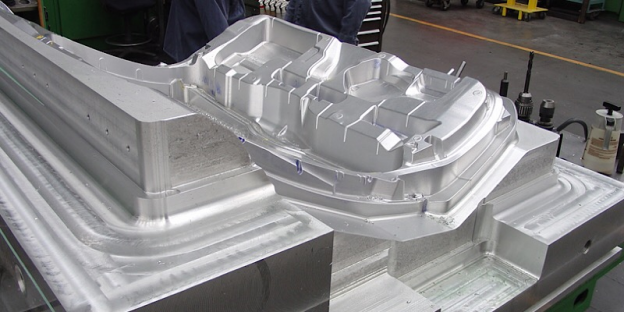
Aluminum mold for injection molding is an example of soft tooling.
Hard Tooling
Hard tooling refers to molds of hard and durable material for the manufacturing process. Hard tooling materials involve steel or nickel alloys. These tools are low-cost tools that can do large parts production without replacement and maintenance. These hard tooling methods undergo less wear and tear and produce consistent, durable, and critical parts production.
Hard Tooling Examples
- Steel and nickel alloy molds developed for injection molding.
- Multi-cavity mold.
- Hard material molds can undergo high temperatures to process materials like PEEK and PEL [5].
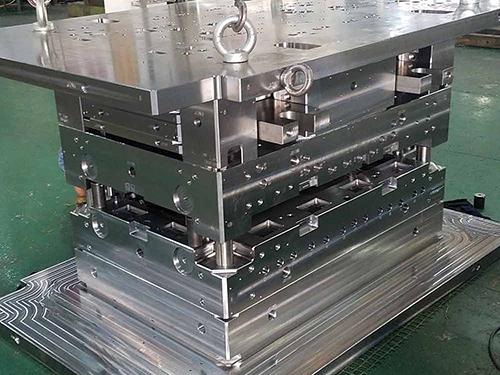
Steel injection molding.
YouTube video on soft tooling vs hard tooling.
www.youtube.com/watch?v=7n1T3zDHmG4&pp=ygUcc29mdCB0b29saW5nIHZzIGhhcmQgdG9vbGluZw%3D%3D
Materials of Soft Tooling: Embracing Flexibility and Versatility
Soft materials offer flexible tooling and provide versatility in parts production. Soft tooling materials provide ease of work compared to hard materials and are cost-effective tooling. Soft material tooling includes aluminum, rubber, silicone, and polyurethane.
Silicone
Urethane casting molds are developed from silicone. Silicone is best known for its ability to conform to complex shapes and ease of fabrication. It has good tear tresistance and works well at high temperatures.
Rubber
Rubbers allow precision tooling and flexible tooling. Rubbers can vary for different hardness levels. Rubbers offer good elasticity and tear resistance. Rubber molds are considered good for casting of materials like different resins, plasters, and concrete.
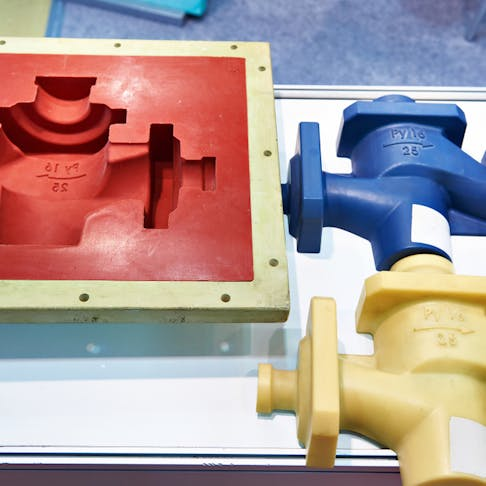
Rubber mold.
Polyurethane
Due to good mechanical properties polyurethane is widely used in industrial parts production of automotive and aerospace applications. Polyurethane is used as soft tooling because of its abrasion resistance, and toughness. Polyurethane can replicate complex and fine details easily .
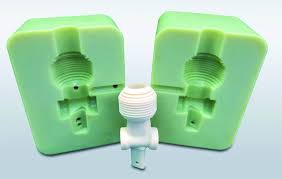
Polyurethane mold.
Applications of Soft Tooling
Soft tooling is considered good for vast applications due to its cost-effectiveness, larger parts production, and ease of fabrication. Some important applications of soft tooling in manufacturing processes are discussed below.
Prototyping
Soft tooling in the quick manufacturing process of molds and parts which makes it use extensive. Soft tooling allows ease to engineers in testing the design functionality and modifying it if required at a low cost and effectively compared to hard tooling.
Low-Volume Production
Low-volume parts production is easy from soft tooling where manufacturers produce small batches of effective and cost-effective parts. This tooling method materials can be used for a long time without replacement.
YouTube video on low-volume production tooling.
www.youtube.com/watch?v=LPx4nPWVOnQ&t=32s&pp=ygUcc29mdCB0b29saW5nIHZzIGhhcmQgdG9vbGluZw%3D%3D
Undercuts
Complex geometrical parts having undercut may require special handling and material. Soft tooling materials like silicon and rubbers are flexible and allow the sample to cool effectively without cracking. This tooling method also allows ease of removal of sample after preparation.
Advantages of Soft Tooling
Soft tooling makes it possible to use flexible, precise, and reasonably priced tools. In situations where speed, crucial elements, adaptability, and cost-effectiveness are paramount, soft tooling plays a particularly significant role. For the manufacturing process of large parts production or small batches soft tooling is crucial because it has fast turnaround times and is flexible.
Cost-Effectiveness
Rubber, silicon, and polyurethane are less expensive compared to other hard materials.
Flexibility
The key consideration present in soft tooling is dynamic design flexibility and evolving. The flexibility of soft tooling allows ease of fabrication of design and then modification of design is also easy.
Fast Turnaround Times
Rapid response, quick prototypes, and fast iteration are the key important for projects in the market. The fast turnaround ability makes all the above easy for soft tooling.
Limitations of Soft Tooling
Although with advantages limitations of soft tooling should be considered. Limitations include less precise dimensions stability, beingn't withstand larger volume production rigors, and being less durable. All the limitations are discussed below.
May exhibit less precise dimensional tolerances compared to hard tooling
Soft tooling materials are flexible and do cause small dimension tolerance compared to hard tooling materials.
Soft materials may not withstand the rigors of high-volume production
Some soft tooling materials like aluminum and glass fiber are not good for large parts production because don’t have enough tear resistance and wear resistance.
Limited durability
Soft tooling materials in the manufacturing process are used to produce 100 or 1000 parts only. Less durability of soft material makes their life span less compared to hard tooling material.
Materials of Hard Tooling: Embracing Strength and Precision
The high performance and durability of hard tooling materials allow is effective working as dies, molds, and other manufacturing tools. These tooling materials allow precision tooling, high-volume production, and repeatable results.
Steel
Different steel grades are used as hard tooling material including stainless steel, tool steel, alloy steel, and others. Steel is a good tooling material because has good wear resistance, thermal properties, and hardness. Steels can do millions of parts production.
Aluminum
Aluminum is softer and lighter than steel making its fitting and handling easy. Is not as good as steel in high-volume production but steel can do high-volume production.
Carbide
The composite of cobalt and tungsten carbide is known as carbide. Is a very hard material that helps in cutting and tooling hard materials. Carbide is considered ideal for machining because of its high durability and excellent wear resistance.
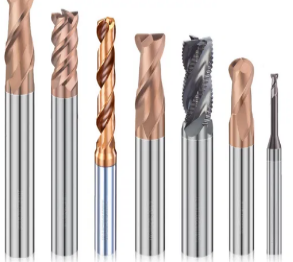
Carbide hard tooling different shapes. s
Applications of Hard Tooling
The manufacturing process requires hard tooling where soft tooling reaches its limitations we shift to hard tooling. Hard tooling provides high durability, tight tolerance, complex geometry, and high-volume production. We will discuss them below.
High-Volume Production
Large quantity of parts production can be done precisely and constantly.
Tight Tolerances
Complex geometry with high dimension tolerance.
Complex Geometries
Complex geometries with intricate features can easily be designed and processed.
Advantages of Hard Tooling
Hard tooling provides longer lead time and higher upfront costs compared to soft tooling. Hard tooling provides dimensions accuracy, durability, and high-volume production which are discussed below. Comparing the advantages and limitations of hard tooling vs soft tooling in the manufacturing process we will choose the best suited for us.
Dimensional Accuracy
Dimension accuracy is provided by the hardness and exceptional endurance of hard tooling material.
Durability
The high durability of hard tooling material allows for large production of parts.
High-Volume Production
High durability and excellent wear resistance allow hard tooling materials to make millions of parts in their lifetime making them low-cost tooling with high-volume production.
Limitations of Hard Tooling
The limitation of hard tooling restricts us from choosing hard tooling. The main limitations of hard tooling are high upfront costs and longer lead times which are discussed below.
High Upfront Costs
Hard tooling has a higher initial cost than soft tooling due to factors including material, setup, production, and designing.
Longer Lead Times
Hard tooling involves a longer lead time for design and processing compared to soft tooling. Also involves post-processing like heat treatments.
What's the Difference between Soft and Hard Tooling?
|
Aspect |
Soft Tooling |
Hard Tooling |
|
Material |
It is composed of less materials such as plastics, P20 steel, or aluminum. |
Made from hardened steel or alloys for durability. |
|
Cost |
Generally lower initial cost. |
Higher initial cost due to material and machining. |
|
Lead Time |
Shorter lead time to produce. |
Longer lead time due to machining processes. |
|
Modification |
Easier and cheaper to modify or adjust. |
More difficult and costly to modify once made. |
|
Production Volume |
Suitable for lower production volumes. |
Suitable for higher production volumes. |
|
Durability |
Less durable and may wear out faster. |
Highly durable, and withstands repeated use. |
|
Precision |
Typically less precise. |
Offers high precision due to material properties. |
|
Tooling Life |
Shorter lifespan compared to hard tooling. |
A longer lifespan can handle more cycles. |
|
Applications |
Prototyping, low-volume production. |
Mass production, high-volume manufacturing. |
Cost Considerations: Breaking Down Soft Tooling vs. Hard Tooling Costs
The initial cost of soft tooling is less compared to hard tooling reason for which is discussed below. The maintained cost of soft tooling is high compared to hard tooling which is also discussed below.
Initial Investment Costs
Hard tooling material like aluminum steel and carbide and their machining are expensive compared to soft tooling materials including polyurethane silicon and rubber.
Ongoing Maintenance Costs
Silicon, rubber, and polyurethane are flexible and less durable that's why only useful for 100 to 1000 parts in their life. The replacement and maintenance of such material is high compared to hard materials which are more durable and have excellent wear resistance.
A Decision-Making Framework: Selecting the Right Tooling Method
There are always some considerations that we have to keep in mind while selecting the accurate tooling method. Some factors are discussed below which illustrate which is better between soft tooling and hard tooling.
Production Volume
Hard tooling has excellent wear resistance and is durable that's why shows high production volume.
Budget
The initial investment for hard tooling is high but for long-term and mass production, hard tooling is cost-effective. While soft tooling initial investment is low but maintenance is high.
Part Complexity
Hard tooling makes it difficult to generate complicated geometry, but soft tooling, with its flexibility and simplicity of manufacturing, can produce complex parts with ease.
Desired Tolerances
Flexibility and less durability of soft tooling material make its dimension tolerance less compared to hard tooling.
Lead Time Requirements
The lead time requirement is high for hard tooling because it requires more time for processing, heat treatments, and designing.
FAQ
Sheet Metal Soft Tooling vs Hard Tooling
Sheet metal soft tooling is easy, gives low volume run, is cost-effective, and good for prototypes but gets wear easily and is less precise. Hard tooling involves large initial costs, difficult machining, and large production time but gives accurate dimension, excellent dimension stability, and high durability.
CNC Machining Soft Tooling vs Hard Tooling
CNC machining of soft materials is easy and can produce complex shapes easily but undergo deformation or tear easily compared to hard tooling.
 Tel/WeChat:
Tel/WeChat:  Email:
Email: 
 Home
Home
 What is CNC Punching? Applications, Operators, and Technology
What is CNC Punching? Applications, Operators, and Technology 







